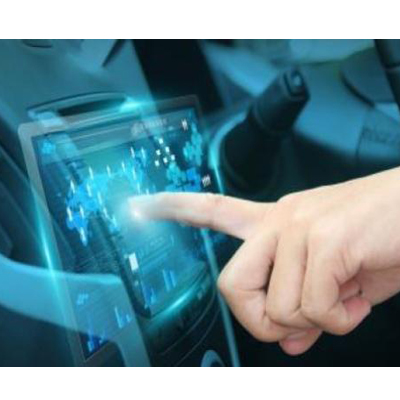The Rise of Electric Vehicles (EVs) in Commercial Fleets: A Comprehensive Guide for B2B Decision-Makers

Introduction:
The automotive industry is currently undergoing a substantial transformation due to the rapid proliferation of electric vehicles (EVs). Leading this change are commercial fleets, which are increasingly embracing electric vehicles to align with sustainability objectives, cut operational costs, and stay competitive in the market. This comprehensive guide aims to offer B2B decision-makers valuable insights into the surging trend of electric vehicles in commercial fleets. It emphasizes the advantages, hurdles, and essential considerations for businesses contemplating the shift.
I. Understanding the Electric Revolution:
The current state of electric vehicles in the automotive industry reveals a landscape marked by innovation and change. With advancements in battery technology and a heightened focus on environmental sustainability, electric vehicles are gaining significant traction. Commercial fleets are at the forefront of this shift, recognizing the long-term advantages of transitioning to electric mobility.
II. Benefits of Electric Vehicles for Commercial Fleets:
Cost Savings: One of the primary drivers for businesses transitioning to electric fleets is the potential for significant cost savings. Electric vehicles boast reduced fuel and maintenance costs, offering a compelling financial incentive for commercial operations. By analyzing the total cost of ownership, businesses can make informed decisions regarding the economic benefits of adopting electric vehicles.
Environmental Impact: Beyond financial considerations, the environmental impact of electric fleets is a crucial factor for businesses committed to corporate social responsibility (CSR). Electric vehicles contribute to lower emissions, reduced air pollution, and a smaller carbon footprint, aligning with the sustainability goals of many organizations.
| Also Read: Electrification Drive: Advancements and Challenges in Electric Vehicles |
Government Incentives: Across the globe, numerous governments are encouraging the adoption of electric vehicles through subsidies and grants. B2B decision-makers must stay informed about these incentives, as they can substantially mitigate the initial investment in electric fleets, enhancing their economic viability.
| Also Read: Electrifying Your Fleet: Navigating the Rise of Electric and Hybrid Vehicles in Commercial Operations |
III. Challenges and Considerations:
Initial Investment: While the long-term benefits are evident, businesses must navigate the initial investment required for transitioning to electric fleets. Understanding the upfront costs and exploring financing options are essential steps for B2B decision-makers.
Infrastructure: Businesses embracing electric fleets must prioritize the establishment of a robust charging infrastructure. The presence of charging stations and the capability to charge multiple vehicles simultaneously are pivotal factors that can influence the efficiency of commercial operations.
Range Anxiety: Addressing concerns related to the range of electric vehicles is paramount. Commercial fleets often cover extensive distances, and overcoming range anxiety is essential for the successful integration of electric vehicles. This involves selecting vehicles with adequate range, planning routes strategically, and educating drivers on efficient driving practices.
IV. Future Outlook and Emerging Technologies: The future of electric vehicles in commercial fleets holds exciting possibilities. Anticipated advancements in battery technology, improvements in charging infrastructure, and the development of electric vehicle design are poised to further enhance the appeal and viability of electric fleets.
Advancements in Battery Technology: Continuous research and development in battery technology are directed towards overcoming current limitations, including charging time and range. The anticipated progression of solid-state batteries and enhancements in energy density is expected to yield electric vehicles with extended ranges and quicker charging capabilities, further enhancing their suitability for commercial applications.
Smart Charging Infrastructure: The future of electric fleets is closely tied to the development of smart charging infrastructure. Innovations in charging technology, including dynamic charging systems and predictive analytics, will optimize charging processes for commercial fleets. This will minimize downtime, enhance efficiency, and contribute to overall operational cost savings.
Collaborations and Industry Partnerships: Anticipated collaborations between automotive manufacturers, technology companies, and energy providers will drive the development and implementation of integrated solutions for electric fleets. These partnerships will lead to holistic approaches that address not only the vehicles themselves but also the supporting infrastructure and energy supply.
From evaluating the current fleet composition to conducting a thorough cost-benefit analysis, businesses must develop a comprehensive plan for the adoption of electric vehicles. This section provides a step-by-step guide, including considerations for fleet management, employee training, and effective communication with stakeholders.
V. Making the Transition: Practical Steps for B2B Decision-Makers: The transition to electric fleets involves a series of strategic steps for B2B decision-makers.
Conducting a Fleet Assessment: Before embarking on the transition, businesses should conduct a thorough assessment of their current fleet composition. This involves analyzing the types of vehicles in use, their average mileage, and the specific operational requirements of the business.
Total Cost of Ownership Analysis: Conducting a thorough examination of the total cost of ownership (TCO) is vital for assessing the financial impact of transitioning to electric fleets. Despite potentially higher upfront costs associated with electric vehicles, the long-term savings in fuel and maintenance expenses frequently surpass the initial investment.
Selecting Appropriate Vehicles: Choosing the right electric vehicles for the business is a critical decision. Factors such as vehicle range, payload capacity, and charging infrastructure compatibility should be considered. Businesses with diverse operational needs may opt for a mix of electric and hybrid vehicles to meet specific requirements.
Investing in Charging Infrastructure: Establishing a robust and scalable charging infrastructure is essential for the successful integration of electric fleets. B2B decision-makers should collaborate with charging infrastructure providers to install charging stations at strategic locations, ensuring convenient access for their electric vehicles.
Employee Training and Change Management: Transitioning to electric fleets requires the support and cooperation of employees. Providing comprehensive training on electric vehicle operation, charging procedures, and maintenance is essential. Clear communication and change management strategies will help employees adapt to the new technology and practices.
Monitoring and Optimization: The implementation of a system to continuously monitor and optimize fleet performance is critical for sustained success. Utilizing telematics and fleet management software can offer real-time insights into vehicle usage, charging patterns, and maintenance needs. Through the analysis of this data, businesses can make well-informed decisions, improve overall efficiency, and fully capitalize on the benefits offered by electric fleets.
Conclusion:
As electric vehicles become increasingly viable for commercial fleets, B2B decision-makers must carefully assess the benefits and challenges associated with this transformative shift. This comprehensive guide aims to empower businesses with the knowledge needed to make informed decisions, ultimately contributing to a sustainable and efficient future for commercial transportation. The combination of case studies, insights into emerging technologies, and practical steps for transitioning ensures that B2B decision-makers are well-equipped to navigate the evolving landscape of electric vehicles in commercial fleets. By embracing this shift, businesses can position themselves as leaders in sustainability and innovation while reaping the financial rewards of a greener and more efficient fleet.



